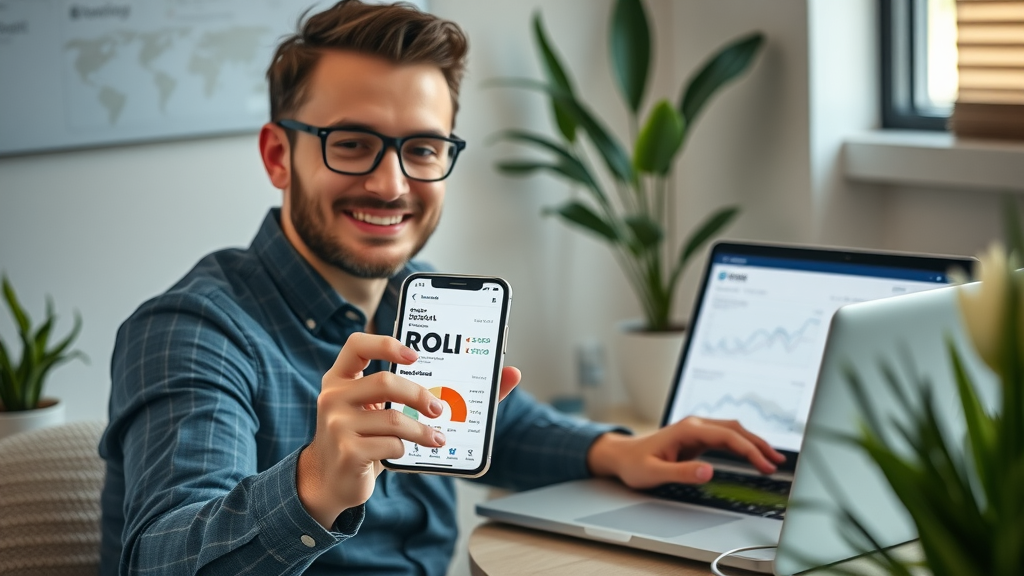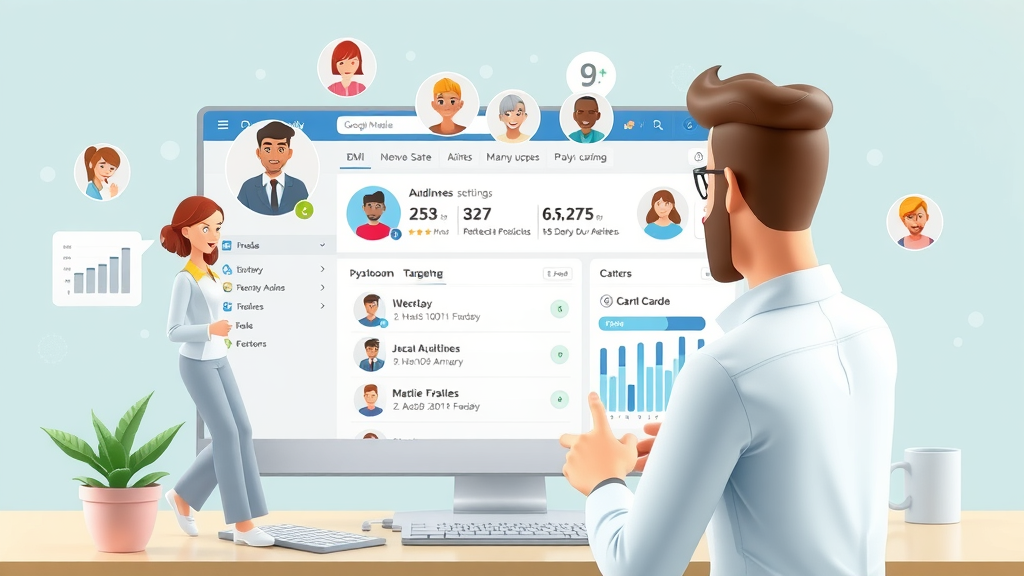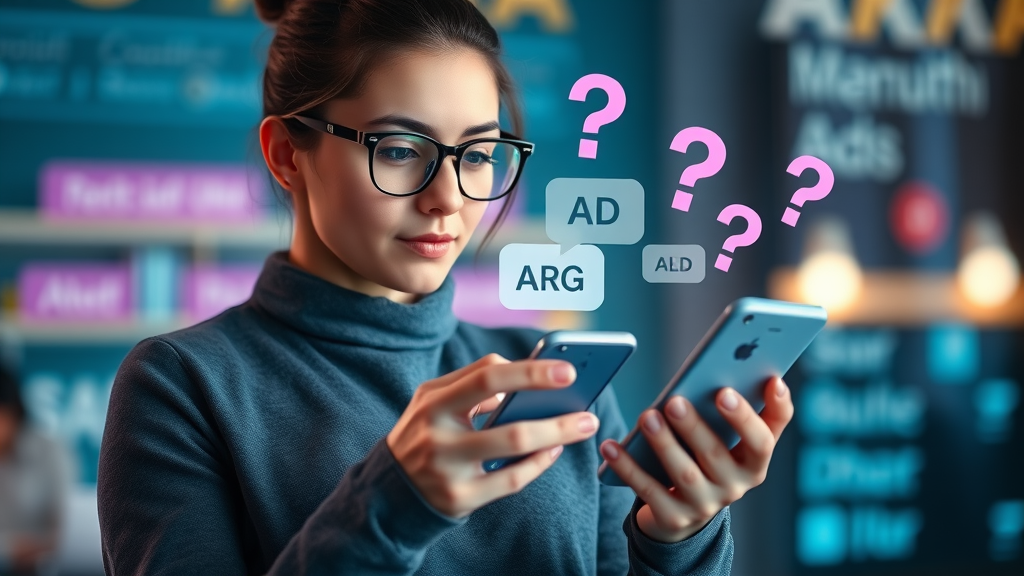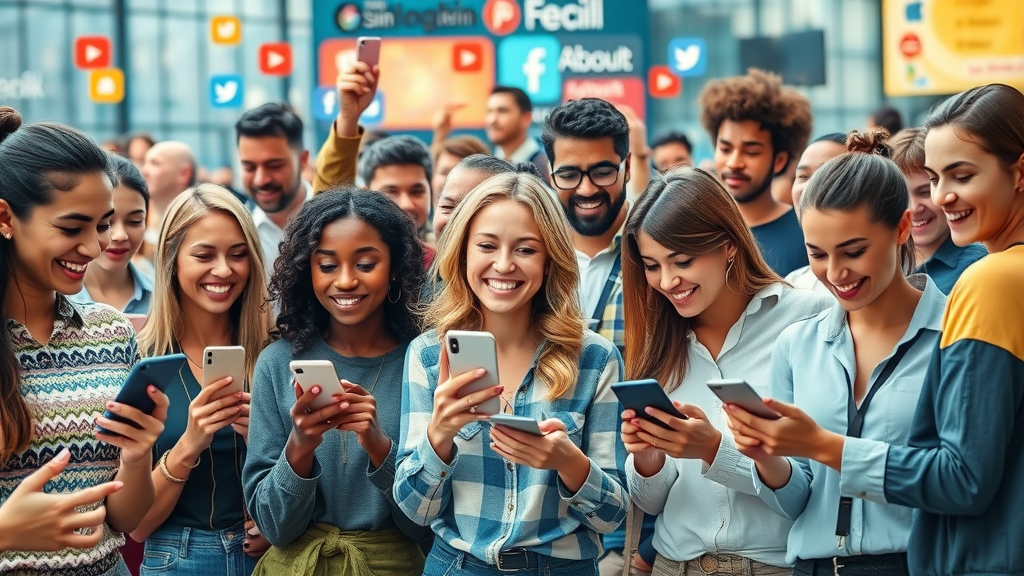Did you know advertisers waste over $100 billion globally each year due to poorly managed paid social campaigns? If you’re running paid social campaigns without a strategic eye on optimization, your budget could be vanishing fast. In this guide, you’ll discover how to identify wasted spend, sharpen your approach, and transform every dollar into real, measurable results.
Unlocking Efficiency in Paid Social Campaigns: Why Optimization Matters
From oversized budgets to ad fatigue, the pitfalls of paid social media advertising are costing brands and businesses precious growth opportunities. Optimizing your paid social campaigns is the difference between watching your marketing budget evaporate and harnessing paid ads that generate high ROI. Today’s social media platforms—whether you’re on Facebook, Instagram, LinkedIn, or TikTok—provide analytics and targeting tools that allow you to make data-driven decisions. By consistently refining your campaigns, you protect your investment while accelerating results.
Effective optimization isn't optional—it’s essential. Data shows that regularly-optimized campaigns see conversion rates double, while wasted spend is cut by up to 40%. When you closely monitor ad formats, target audiences, and creative assets, you cut through noise and competition, ensuring your paid social ad spend works harder. Making informed tweaks to your media ad strategy quickly turns inefficiency into competitive advantage, especially as advertising costs climb and visibility becomes more crowded across every media platform.

"Advertisers collectively waste billions annually on mismanaged paid social campaigns. Only strategic optimization turns spend into growth."
What You'll Learn About Paid Social Campaigns
- How to identify and eliminate wasted ad spend in paid social campaigns
- Choosing the right social media platforms and ad formats for your goals
- Effective audience targeting strategies for paid social media
- Leveraging analytics to refine your paid social ad performance
- Best practices for maximizing ROI on paid social media advertising

Understanding Paid Social Campaigns in Modern Media Advertising
What Are Paid Social Campaigns? Core Principles and Benefits
Paid social campaigns involve running media ads on social media platforms like Facebook, Instagram, LinkedIn, Twitter, and TikTok, paying for targeted placement to reach your ideal customer. Unlike organic content (posts you don’t pay to promote), paid social ads are engineered for fast visibility, detailed targeting, and measurable ROI. The core principles revolve around clear objective-setting, choosing the right ad formats, refining audience targeting, and closely monitoring analytics. With media advertising moving toward automation and personalization, paid social gives brands the granular control to deliver the right message, to the right target audience, at the exact right time—driving conversions and reducing wasted spend.
Benefits of paid social media campaigns include immediate reach, advanced audience targeting, scalable budgets, and performance tracking often unavailable with organic content alone. Brands can promote new launches, retarget website visitors, or boost seasonal campaigns for specific results. When managed strategically, paid social campaigns help lower overall marketing costs by tightly aligning spend with real performance metrics and business goals, making them an essential part of any modern media campaign.
As you refine your paid social strategy, remember that the quality of your ad content plays a pivotal role in campaign performance. For actionable advice on crafting compelling posts that resonate with your audience, explore these seven tips for writing great content for social media posts at Seven Tips For Writing Great Content For Social Media Posts.
How Paid Social Campaigns Differ from Organic Social Media Marketing
Unlike organic social media, where content is primarily delivered to followers or those who find it through hashtags and shares, paid social campaigns break the platform’s natural traffic barriers. With a paid ad, you gain access to powerful controls: you can target demographics, interests, and behaviors or even leverage lookalike audiences to grow beyond your existing followers. The speed and scale of paid social ads mean you can generate results—clicks, leads, or sales—at a pace organic posting cannot match.
While organic content builds long-term brand equity and community, paid social media ads put your message in front of potential customers immediately. However, reliance on paid channels without good creative and alignment with landing pages can create disjointed experiences. In an effective media advertising strategy, paid and organic work together, ensuring you’re both attracting new eyes and nurturing your community. Understanding these differences is crucial for building campaigns that actually drive ROI, rather than just burning through budgets.
| Feature | Paid Social Campaigns | Organic Social Media |
|---|---|---|
| Reach | Broad, instant, highly targeted; reaches non-followers | Limited to existing followers, gradual audience growth |
| Cost | Direct spend per campaign (budget-controlled) | No direct cost, but requires time and resource investment |
| Targeting | Granular (demographics, behaviors, lookalikes) | Minimal built-in targeting, relies on organic reach |
| Speed | Immediate results, real-time data and feedback | Slow build, longer feedback cycles |
| Longevity | Campaign-based, short bursts or always-on | Ongoing, content remains in feed |
| Examples | Facebook ad, Instagram carousel ad, LinkedIn sponsored update | Brand posts, viral shares, influencer tagging |
Essential Elements of Winning Paid Social Campaigns

The Role of Social Media Platforms in Paid Social Campaign Success
Your choice of social media platform is the foundation of campaign success. Facebook offers broad demographic coverage and advanced ad formats for both B2B and B2C media advertising. Instagram capitalizes on visual storytelling, making it ideal for lifestyle, fashion, and D2C brands. LinkedIn is the go-to for B2B paid media campaigns, supporting lead generation and recruitment with robust targeting based on industry, job title, and company size. TikTok delivers high engagement among younger audiences with video ad formats, while Twitter (now X) suits real-time event-based campaigns. The key is matching your social media ad strategy—with the right platform—to your business objectives and target audience.
A successful paid social campaign leverages each media platform’s strengths, aligning your message and creative format to how users interact there. Combining several social media channels—like running Facebook ad campaigns in tandem with LinkedIn sponsored content—can amplify reach, but only if budgets and goals are coordinated. Platform selection isn’t just about audience size; it’s about where your target audience is most engaged and receptive.
"Choosing the right social media platform for your paid media strategy is as vital as the message itself."
Choosing the Right Ad Formats for Your Paid Social Campaigns
Ad format selection is critical to achieving your campaign goals—whether you want to drive website clicks, collect leads, or boost brand awareness. Common media ad formats include carousel ads (showcasing multiple products or features), video ads (capturing attention with movement and story), image ads (highlighting strong visuals), and slideshow ads (combining images into lightweight video experiences). Each format excels with specific audiences and objectives; for example, carousel ads are ideal for e-commerce, while video ads are preferred for driving upper-funnel engagement on platforms like Instagram and TikTok.
Consider how your creative assets align with each ad format. Media platforms continually roll out new options, so staying current boosts your paid social ad effectiveness. Testing formats against your KPIs allows you to learn which resonate with your audience and where your dollars drive the strongest results.
- Media ad formats: carousel, video ad, image ad, slideshow
- How different ad formats drive results for specific goals
Audience Targeting: Reaching Your Specific Audience with Paid Social Media
No matter how brilliant your ad copy or creative, campaigns fall flat without sophisticated audience targeting. Social media ads let you go well beyond age and gender demographics. You can segment by interests, job titles, behaviors, purchase intent, or even create custom and lookalike audiences based on your best customers. Platforms like Facebook and LinkedIn have robust data, letting marketers pinpoint a specific audience with laser accuracy, reducing waste and boosting relevance.
Effective paid media campaigns use both broad targeting for awareness and narrow retargeting for conversions. Mapping your audience’s journey—what drives discovery, consideration, and purchase—will inform better targeting decisions on every media platform. Remember, with advanced settings like exclusions, layered interests, and retargeting, you can spend more efficiently and avoid costly mistakes by putting the right ads in front of those most likely to convert.

Crafting High-Impact Paid Social Media Ad Creative
Winning paid social ads blend compelling visuals, concise value propositions, and clear calls to action. Your creative should stand out in busy feeds, communicate your offer instantly, and connect emotionally with your target audience. Test different imagery, headlines, and video ad concepts—often the smallest creative tweaks yield the biggest jump in performance. Ensure creative alignment between your ad format, platform, and campaign goals. For example, a playful video ad might grab attention on TikTok, while a professional static banner works best on LinkedIn for B2B lead generation.
Don’t overlook the power of social proof: user testimonials, ratings, influencer endorsements, and real-life imagery increase trust. Every piece of ad creative should reinforce your brand and make it easy for users to act, whether it’s clicking, sharing, or purchasing.
Strategic Planning: Steps to Optimize Paid Social Campaigns
Defining Objectives and KPIs for Paid Social Campaign Success
Every highly optimized paid social campaign starts with clear objectives and measurable KPIs. Before spending a single dollar, ask: What is the campaign’s main goal—brand awareness, lead generation, website traffic, or sales? Each objective requires a different approach to ad formats, messaging, and targeting. Key performance indicators (KPIs) like click-through rate, conversion rate, cost per acquisition, and ROAS (return on ad spend) should be set in advance and reviewed regularly.
Tracking these metrics gives you clear signals for when to adjust budgets, swap creative, or pause underperforming ads. Remember, the most effective media ads are those aligned with business objectives, not vanity metrics. Ongoing optimization based on KPIs keeps campaigns efficient and maximizes every dollar spent on your media platform.
Budget Allocation: Smart Spending for Maximum Paid Media Impact
Determining where and how to invest your paid social ad budget is vital for campaign efficiency. Rather than spread funds too thin across channels, focus on a few high-potential platforms where your audience is most active. Analyze previous campaign data and test with small budgets before scaling winners. Adjust your spend as platforms shift in engagement or as certain ad formats prove more effective.
Budget allocation also involves reserving funds for ongoing testing and optimization. Tools built into each social media platform can automate some spend decisions based on performance, but staying hands-on leads to smarter, real-time pivots—helping you avoid the all-too-common trap of set-and-forget spending.
| Platform | Budget % | Notes |
|---|---|---|
| 40% | Breadth of targeting; strongest for most B2C and SMBs | |
| 25% | Visual commerce, younger audience appeal | |
| 20% | High-value B2B targeting, higher average CPC | |
| TikTok | 10% | Video-driven engagement, Gen Z demo |
| 5% | Event-driven, real-time, niche audience |

Integrating Paid Social Campaigns within Your Overall Media Campaign Strategy
Successful marketers understand that paid social campaigns work best in harmony with other media advertising channels. Integration means pacing paid ads alongside organic content, email, influencers, and search marketing, ensuring your message is consistent across all touchpoints. Use insights from other channels to refine your paid media targeting and creative.
A unified strategy allows you to retarget website traffic, sync paid social ads with product launches, and even adjust media buys based on campaign performance in real-time. The best results come when paid social campaigns are not siloed but are part of a holistic, multi-channel plan.
Setting Up Tracking & Analytics for Paid Social Media Ad Performance
Without analytics, every paid social ad is a guessing game. Setting up tracking involves deploying UTM parameters, installing platform pixels (like Facebook Pixel), and enabling conversion events on your site. These tools reveal which ads and platforms are driving the most valuable actions—such as sign-ups, purchases, or form completions.
Review analytics dashboards daily to spot trends, optimize creative, and reallocate spend quickly. A data-driven approach helps eliminate guesswork, closes the loop between campaign spend and business outcomes, and ensures each dollar of your paid media budget delivers tangible performance.
Optimization Tactics: Quick Wins for Paid Social Campaigns
A/B Testing for Paid Social Ads: From Copy to Ad Formats
A/B testing is the quickest way to boost ROI from media ads. Run experiments by varying ad copy, images, headlines, and calls to action. You can also test different ad formats—carousels versus single image, video ad versus slideshow—to learn what resonates best with your target audience.
Small changes in creative can deliver big improvements: a new headline might double click-throughs, or a refreshed image could slash your cost per conversion. Regular A/B testing enables continuous optimization, ensuring you’re not wasting time or money on underperforming creative or strategies.
Retargeting and Lookalike Audiences: Boosting Paid Social Media ROI
Retargeting lets you show ads to users who’ve already interacted with your website or app, substantially increasing conversion rates. Lookalike audiences—available on most social media platforms—enable you to reach new people similar to your best customers. Both tactics sharply increase the efficiency of your paid social campaigns by focusing spend where interest is proven or highly probable.
Investing in layered audience targeting means your ads are seen by those most likely to act, decreasing wasted impressions and maximizing ROI. Use analytics to refine which segments work, then double down on audiences that bring in the strongest results.
"Small tweaks to paid social ad targeting can double your conversion rate—without increasing your budget."
Improving Paid Social Media Ad Creative with Analytics
Continuous creative improvement comes from diving deep into analytics. Review metrics like engagement rate, scroll depth, video completion, and post-click actions to see what’s working. Are video ads outperforming static images? Do certain colors, phrases, or offers lead to higher conversions? Data from your media ad platforms will guide refinements.
This process goes beyond guesswork. Informed by real-time analytics, you can swap out ineffective visuals, iterate on ad copy, and launch dynamic creative optimization that adapts in-flight to changing audience behavior. The most successful paid social media campaigns never settle; they’re relentlessly refined for strong growth.
Explainer: How to Identify and Reduce Wasted Spend in Paid Social Campaigns

Leveraging Automation Tools for Paid Social Media Campaign Management
Automation is revolutionizing paid social campaign management. Tools built into social media ad platforms and third-party solutions can automate bid adjustments, pause underperforming ads, and dynamically update creative based on performance. By leveraging these tools, marketers save time, respond to data in real-time, and scale campaigns more efficiently.
Automation doesn’t replace strategy but multiplies its impact. Use rules to trigger adjustments (like reducing bids if cost per click spikes) and set alerts for unusual activity. Automation frees your team to focus on high-level creative and strategy, turning busywork into business growth.
Common Pitfalls: Mistakes That Drain Your Paid Social Campaign Budget
- Ignoring ad relevance and quality scores
- Overly broad or unchecked audience targeting
- Lack of alignment between creative and landing pages
- Neglecting campaign optimization and reporting cycles
- Underutilizing available ad format options in media platforms

Case Studies: How Real Brands Rescued Their Paid Social Media ROI
Real-world examples illustrate how quick, data-driven changes can revive failing paid social campaigns. A fashion brand slashed wasted spend by 35% when they shifted from broad targeting to retargeting engaged website visitors. A B2B SaaS company boosted their leads by 50% by switching from static images to video ads and regularly A/B testing headlines. An e-commerce retailer improved ROI by aligning product ads to specific audience segments and dayparting their campaigns for peak engagement times.
What all of these brands share is a commitment to ongoing optimization: reviewing analytics weekly, testing new ad formats, updating creative based on feedback, and never letting campaigns run on autopilot. The bottom line? Paid social campaign wins come from proactive management, not luck.
Case Study Walkthrough: From Wasted Spend to High-Performance Paid Social Campaigns
People Also Ask: Paid Social Campaigns FAQs
What is the 5 3 2 rule for social media?
The 5 3 2 rule refers to a content strategy in paid social campaigns, where 5 posts are interesting or educative, 3 are shared from others, and 2 are more personal or direct. For paid social, balance promotional, curated, and authentic content for maximum engagement.
What is the best paid social media platform?
The best platform for paid social campaigns depends on your target audience and campaign goals. Facebook Ads offers unmatched scale, LinkedIn excels for B2B, and Instagram is strongest for visual media and younger demographics.
Are paid social media ads worth it?
With proper strategy and optimization, paid social campaigns offer strong ROI, brand reach, and granular targeting. However, without optimization, they can quickly become a sunk cost.
What is a paid campaign?
A paid campaign refers to any marketing initiative on social media or digital platforms where businesses pay for ad placement to reach specific audiences. Paid social campaigns are a subset focusing specifically on social channels.
Tutorial: Setting Up Tracking for Paid Social Campaigns
FAQs: Fast Answers to Common Paid Social Campaigns Questions
- How often should I adjust paid social media ad bids? Review and adjust bids at least weekly, or more often during high-spend campaigns. Responsive bidding helps stretch your budget and outpace competitors’ media ads.
- What KPIs matter most in media ad reporting? Focus on click-through rate, conversion, cost per acquisition, and ROAS—these KPIs track true business impact, not just vanity metrics.
- Should I run always-on paid social campaigns or time-limited bursts? Always-on campaigns are great for steady awareness, but pulsed, time-limited bursts often drive faster spikes in engagement or sales for promotions and launches.
- How can I measure true ROI from my paid social campaigns? Use attribution tools to track lead or sale sources and calculate total return compared to spend across all your ad platforms.
- Are video ads better than static for all social platforms? Generally, video ad formats outperform static images, but performance varies by objective and platform. Test both and use analytics to determine what’s most effective for your specific audience.

Key Takeaways for Optimizing Paid Social Campaigns
- Paid social campaigns require ongoing optimization for true ROI
- Identify and swiftly cut underperforming ads
- Leverage platform and audience-specific strategies for media advertising
- Prioritize analytics and A/B testing
- Continually align creative to campaign goals and audience
"Optimization isn’t a one-time event—it’s the backbone of successful paid social campaigns."
Conclusion: Transform Your Paid Social Campaigns—Stop the Waste, Accelerate the Wins
Ready to stop wasting ad spend and start winning? Optimize your paid social campaigns today for bigger returns and faster growth. For more information, read The Ultimate Guide to Social Media Marketing: Strategy, Platforms, Channels, and Tips to Win, and How to Build a Winning Plan.
For more information, read The Ultimate Guide to Social Media Marketing: Strategy, Platforms, Channels, and Tips to Win, and How to Build a Winning Plan.
Need Help? Call Digital Media Marketing at 1-586-997-0001
If you’re eager to take your paid social efforts even further, consider expanding your knowledge with advanced strategies that can amplify your reach and impact across all digital channels. Discover how to unlock the full potential of your social media presence, integrate paid and organic tactics, and leverage the latest trends for exponential growth by reading Social Media Marketing: Unlock Secrets to Explode Your Reach. This resource offers a broader perspective on building a cohesive marketing ecosystem, helping you move from tactical wins to long-term, sustainable success.
 Add Row
Add Row  Add
Add 




Write A Comment